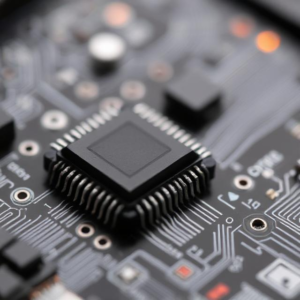IoT (Internet of Things) refers to a system of everyday objects (like smart devices, sensors, or appliances) that are connected to the internet, allowing them to communicate and share data. Examples include:
- Smart thermostats that adjust temperature.
- Smart security cameras that you can access from your phone.
- Wearable fitness trackers that send data to your phone or the cloud.
Why Is Security Important in IoT?
Since IoT devices are connected to the internet and often collect sensitive information (like personal data, health data, or home security information), it’s crucial to ensure these devices are secure. If they’re not protected, they can be vulnerable to hacking, misuse, or attacks that can harm individuals or compromise privacy.

Common Security Risks in IoT:
- Data Privacy:
- IoT devices often collect sensitive data, such as your location, health details, or home activities. If this data is not properly protected, it can be accessed by unauthorized users, which could lead to identity theft, financial loss, or privacy breaches.
- Device Vulnerabilities:
- Many IoT devices are not built with strong security features. They might have weak passwords, outdated software, or unpatched vulnerabilities that hackers can exploit to gain control of the device.
- Unauthorized Access:
- If an IoT device is not properly secured, attackers might gain access to it and use it to control it remotely. For example, an attacker could access a smart door lock and unlock it, or hack a security camera and spy on you.
- Insecure Communication:
- IoT devices communicate with other devices or the cloud to send data. If these communications are not encrypted, they can be intercepted by hackers. This means sensitive information, like your home security data or personal health stats, could be stolen during transmission.
- Botnets and DDoS Attacks:
- Some IoT devices can be hijacked by hackers to form a botnet (a network of infected devices) and be used to launch Distributed Denial of Service (DDoS) attacks. These attacks overload a website or network, causing it to crash or become unavailable.
Key Security Considerations for IoT Electronics:
To make IoT devices safer and more secure, here are some important things to consider:
- Strong Authentication and Access Control:
- Passwords: Ensure that IoT devices use strong passwords. Simple or default passwords (like “admin” or “1234”) are easy for hackers to guess.
- Multi-factor authentication (MFA): This adds an extra layer of security, where users need more than just a password to access devices or services (e.g., a code sent to your phone in addition to a password).
- Data Encryption:
- Data encryption ensures that information sent between IoT devices and servers is protected. This means even if hackers intercept the data, they won’t be able to read it.
- End-to-end encryption is particularly important, where data is encrypted from the moment it leaves the device until it reaches its destination.
- Regular Software Updates and Patches:
- Just like how your phone or computer needs software updates to fix bugs or security holes, IoT devices also need regular updates to stay secure. Manufacturers should release patches (software fixes) for any security vulnerabilities found.
- Secure Communication Protocols:
- IoT devices should use secure communication methods (like HTTPS, SSL/TLS) to ensure that the data being sent is encrypted and cannot be easily intercepted by hackers.
- Network Security:
- Since IoT devices are often connected to a local network (like your home Wi-Fi), it’s important to secure your network. This includes:
- Using a strong Wi-Fi password.
- Enabling firewalls to prevent unauthorized access.
- Setting up network segmentation, which separates IoT devices from other important devices (like computers or servers).
- Since IoT devices are often connected to a local network (like your home Wi-Fi), it’s important to secure your network. This includes:
- Device Authentication:
- Each IoT device should have a unique identity that can be verified. This prevents unauthorized devices from connecting to your network or interacting with your system. For example, using unique device IDs or certificates to confirm a device’s authenticity.
- Physical Security:
- Some IoT devices may be physically accessible, especially in public spaces or homes. It’s important to ensure that the device itself is tamper-resistant and can’t be easily disabled or hacked by someone who gains physical access to it.
- Secure Cloud and Storage:
- Many IoT devices store their data in the cloud (a remote server). It’s essential that this data is protected by strong encryption and secure access controls to prevent unauthorized users from accessing sensitive information.
- Decommissioning Devices:
- When IoT devices are no longer in use (for example, when you replace an old smart thermostat), they should be securely wiped of all data before being disposed of. Simply deleting the app or turning the device off is not enough — data should be permanently erased.
Example of IoT Security Breach:
A smart camera might be compromised if it doesn’t have strong passwords or encryption. A hacker could gain access to the camera and start spying on you. In some cases, hackers might also hijack these cameras and use them in a botnet to attack other devices.
Summary:
Security in IoT is about making sure that the devices and the data they collect are protected from hackers and other unauthorized users. Some of the most important things to consider are:
- Using strong passwords and multi-factor authentication.
- Encrypting data so it’s secure during transmission.
- Regularly updating software and patching security vulnerabilities.
- Using secure communication methods and protecting networks where devices connect.
- Ensuring physical security of devices and proper decommissioning.
By paying attention to these security considerations, you can help make sure your IoT devices are safe to use and won’t become a target for attackers.










